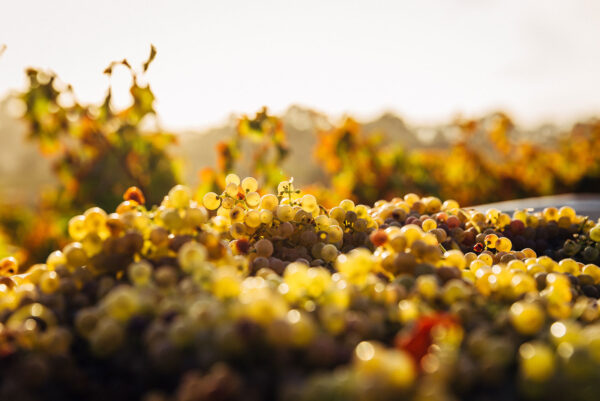This column is written by the team at Arrowine & Cheese (4508 Cherry Hill Road). Sign up for the email newsletter and receive exclusive discounts and offers. Order from Arrowine’s expanding online store for curbside pickup or in-store shopping. Have a question? Email thenose@
So you want to make wine?
So you think you want to make wine?
What were you think’n? It’s 4 a.m., time to get to work. So you spent a month checking your parcels, monitoring ripeness by tasting berries to select or the perfect moment to harvest. A sudden forecast of rain sends shivers up your spine, sending you into over-drive to pick as fast as you can if you find people crazy enough to join you.
Armed with shears, working in oppressive heat, roasting under the hot sun, you carefully select only the ripest bunches as you swat mosquitoes; bees buzz swirling around you, only to land on the bunch you are about to grasp. You must continuously bend, stretch, and contort yourself while gently tossing a season’s worth of work into plastic bins. You schlep the countless plastic containers full of fruit while some escaping juice runs down your legs as you run to the receiving truck.
Alley up, throw them up to the unlucky harvester who must have pissed someone off to get stuck on the truck all day long in the scorching sun, humping plastic lugs full of grapes, bees, and what have you. Back and forth until your arms numb, and it’s just 9 a.m. Thank G-d it’s 9 a.m.
Time to stop for “casse-croute” or the French version of a “coffee break in the vineyard.” Bread, cheese, salami or pâte, and of course, a little liquid sustenance, i.e., wine. Just like the office. A quick snackeroo, and back you go!

The fruit arrives at the winery. So you undo what you just did. Thankfully you are after twenty or so bee stings; you hardly feel them. But at least you are given a cot to sleep on in an unairconditioned barn, attic, or old kitchen with 20 strangers. But the food is good, and there’s plenty of wine.
Time for “triage” or sorting the fruit either by hand or with a fancy vibrating table that does it for you. The aim is to remove any malformed, damaged, or unhealthy clusters, even down to individual berries, along with any leaves, bugs, and the occasional cigarette butts.
Many growers refrigerate the fruit for 8 to 12 before fermentation to preserve freshness. Then off to the de-stemmer, where the bunches are relieved of their berries. So from here on, we are talking about the fermentation of red wine.
Decision number one, do you destem, all or partially or entirely? Under-ripe or vintages with less than perfect fruit are usually wholly destemmed — no need for unripe raspy green stem tannins. If the stems are mature, fermenting a portion of “whole clusters” is an option. Adding stems brings complexity, but be careful of the proportion you use. Stems are also a source of tannins.
The crushed grapes, juice, and skins head into a vessel of the winemaker’s choosing (I’ll talk more about this next week) to settle and macerate. The temperature can be controlled by using refrigeration. Cold retards the yeast activity. You don’t want the juice to ferment straight away. This maceration also has the benefit of reducing the sulfur needed to keep the demons away.
The time that the skins are in contact with the juice is critical. Think of making tea; the more you seep, the more color and tannin you extract. Healthy, clean skins allow for extended mingling in juice with great benefits. The skins are the aromatic heart and soul of the wine.
Everything comes from the skins (in reds.) The winemaker decides when the “right” level of extraction has taken place, and then it’s off to the races — more about that next time. If I’m “nerding out,” please tell me!
Cheers,
Doug
Photo by Thomas Schaefer on Unsplash


